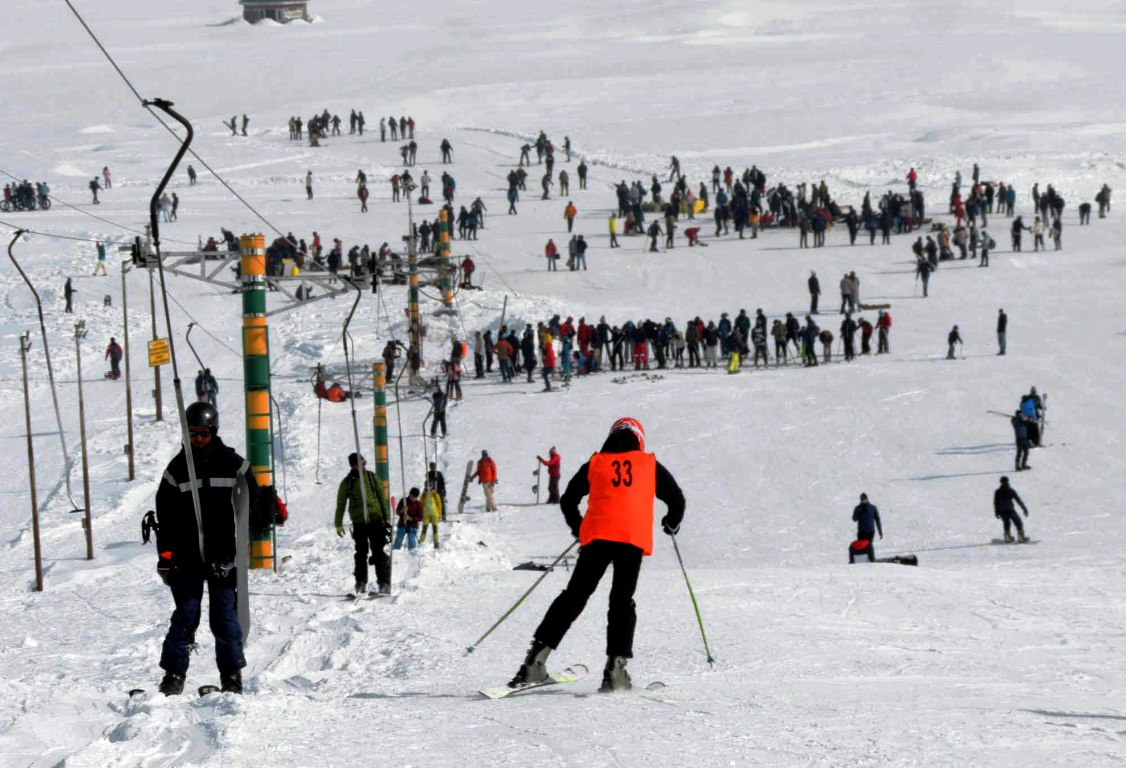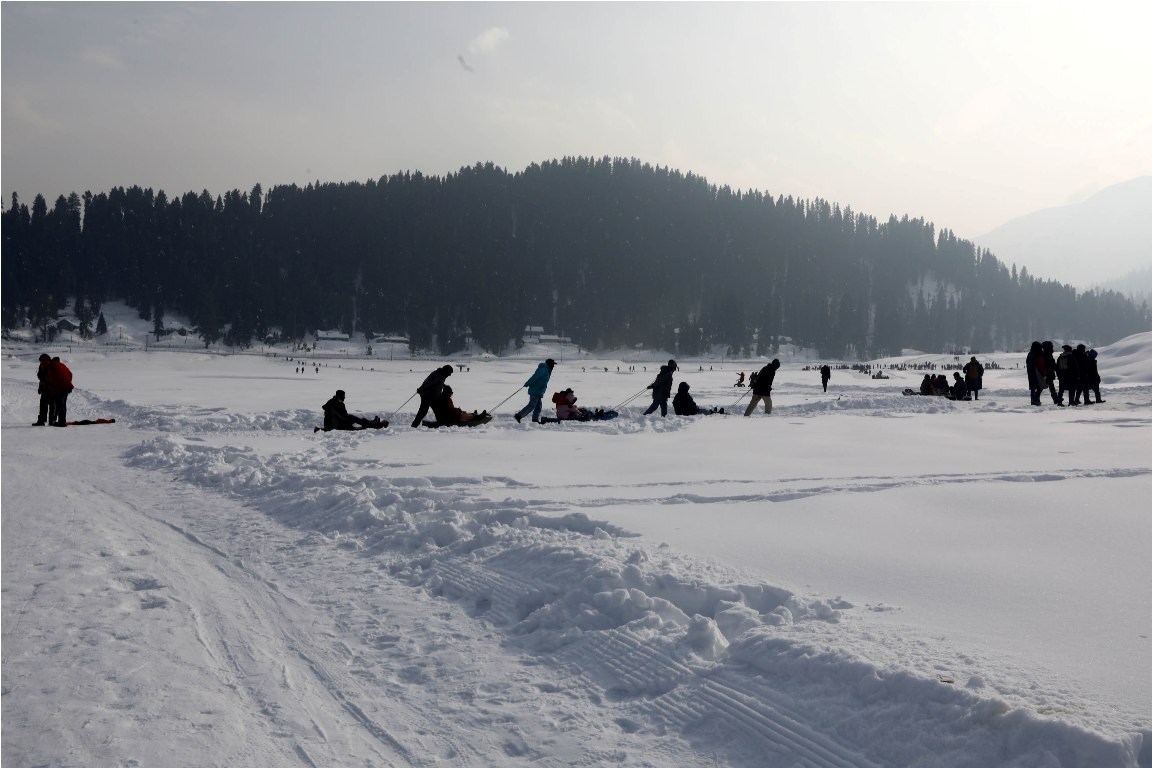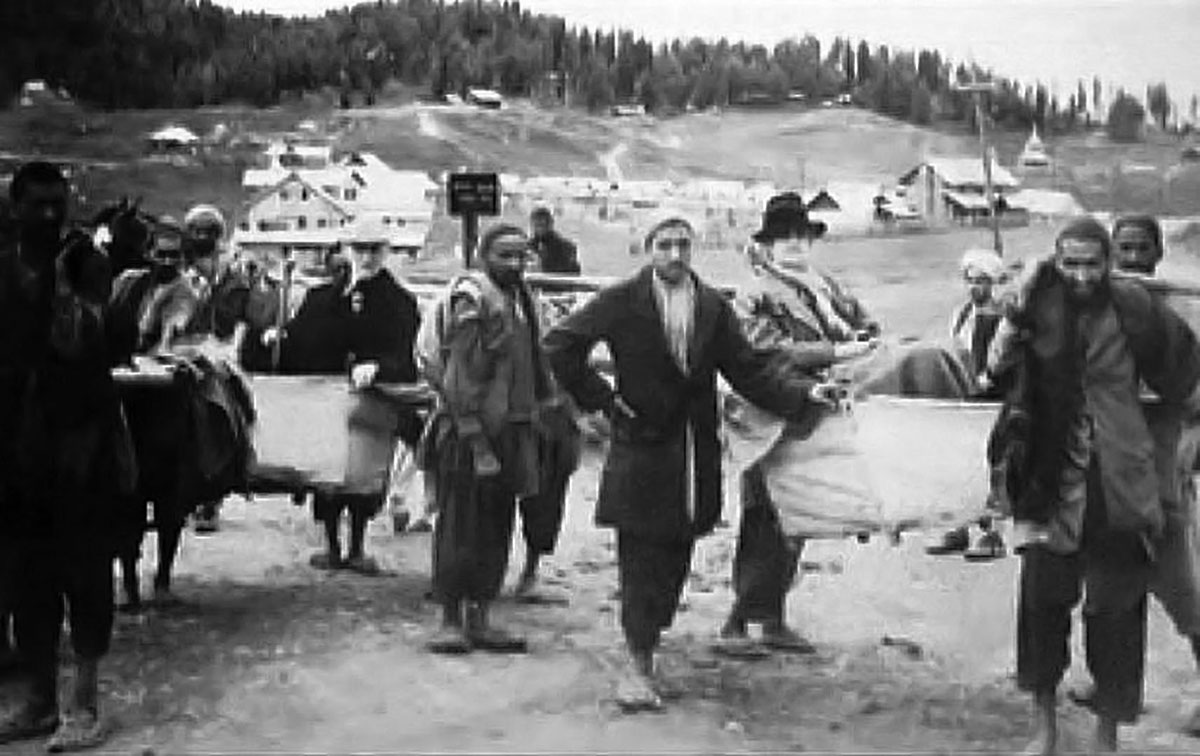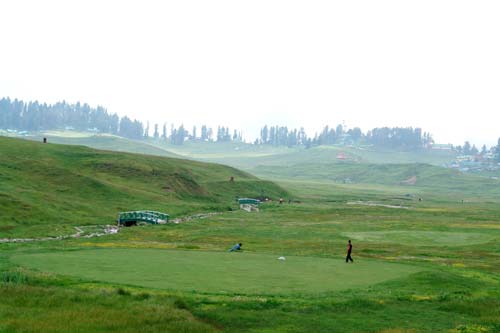by M J Aslam
It was not before 1939 and 1942 when some British pioneers of the Himalayan Range of Mountains, introduced the first time in history Gulmarg as a Ski-Ing Centre in winter in collaboration with the Ski Club of the then Government of India

Kashmir has many summer retreats suffixing with the word Marg – Sonamarg, Tangmarg, Gulmarg, Khilanmarg, Youmarg, and Nagmarg. Gulmarg is one of the Margs that has historical importance for Kashmiris.
Gulmarg is a compound word or portmanteau of two Persian words Gul and Marg. Gul means flowers and Marg means meadow. So, Gulmarg is a meadow of flowers. The credit for discovering the charms of Gulmarg first time in history has been given to Yousuf Shah Chak, the last Chak ruler who reigned from 1579 to 1586 AD.
Yousuf Shah Chak was the most romantic ruler of Kashmir’s post-medieval period. By nature, he was pleasure-loving, time spending and enjoying for most of his time at picnic spots of Gulmarg, Sonamarg, Achabal and Ahrabal. He was a music lover famous for flirting with women. He fell in love with Zoon, a gorgeous woman from Pampore. Zoon, Kashmiri name of the moon, was a poetess always singing her songs in the pastures under the shade of the trees. He married her and she became known as Habba Khatun.

Gulmarg was “the most favourite” recess of Chak’s pleasure taking and enjoyment with Zoon, Habba Khatun. His love story with Habba Khatun is well known in Kashmir history and literature. He spent good times at this hill station. Their love story with Zoon is filled with both joy and grief. The Chak sovereign is credited for giving Gulmarg the royal patronage as a pleasure spot. Seemingly, the name “Gulmarg” must have emerged from his era itself as Persian was the court language from the time of his predecessor, Sultan Zainul Abidin Bud-Shah.
PN K Bamzai writes that Gulmarg was originally called Gauri-Marg, wife of Shiva. He has claimed that Yusuf Shah Chak changed its name of Gauri-Marg, to present Gulmarg. However, he has not cited any historical reference in support of his claim. The irony is that a liberal like Yousuf Shah Chak, who is known to history as Ayash Badshah, is said to have changed this Sanskrit name of Gulmarg. It is an addition to a long list of mythologies. It may be noted that “on Baramulla to Poonch road lies a cold place called Gormarg which is famous for a variety of flowers and a water-stream running through it and environs of Gulmarg are much beautifuller than that of Gormarg”. It clearly shows that name of Gormarg has been deliberately omitted by Bamzai Sr.

Much later, it was Emperor Jehangir who visited Gulmarg and collected some flowers from here. However, Gulmarg was first time brought on the map of the world by a British Geologist and Topographer, Godwin Austen, in 1860, as a summer hill station. A little later, it became the most favourite summer retreat of British Resident and European travellers. It was the favourite health resort of British Resident, British missionaries and foreign travellers during the late nineteenth century.
The moonlit nights with cool blowing airs have had a soothing effect on the tired minds of the visitors. They would visit and stay in Gulmarg during the hot summer months of June-August. Godwin Austen worked under the British East India Company’s Trigonometrically Survey of India and he is credited with having discovered several valleys, glaciers, from Pir Panchal to the Karakoram. Some of his discoveries in the region are named after him.

Immediately, with the arrival of hot summer days, Gulmarg has had been always the target of the pastoral pursuit of shepherds, bakerwals, and husbandmen for tending droves of horses, sheep, and cows upon its lush green grass. Europeans would enjoy a horse ride in the summers on the grass of Gulmarg.
It must be noticed that it was not before 1939 and 1942 when some British pioneers of the Himalayan Range of Mountains, introduced the first time in history Gulmarg as a Ski-Ing Centre in winter in collaboration with the Ski Club of the then Government of India. In other words, Gulmarg was a summer holiday or a summer hill station and not a winter hill holiday or a winter hill station for staying or for any winter games before that time.
 Off late, Gulmarg has been used for picturising some Bollywood songs and scenes, and also as propaganda centre of cultural shows and winter-sports by the ruling elite especially from Bakshi era when it formed part of his “famous” Jishn e Kashmir show during summers of the late 1950s. Before that, on August 9, 1953, when Sheikh Abdullah, the then Prime Minister of Jammu and Kashmir, had gone for cooling his heels, he was arrested and dismissed from Prime Ministership of Kashmir under the orders of his bosom friend and political mentor, Pandit Jawaharlal Nehru. So, it is clear that Gulmarg has historical importance in many ways for the people of Kashmir.
Off late, Gulmarg has been used for picturising some Bollywood songs and scenes, and also as propaganda centre of cultural shows and winter-sports by the ruling elite especially from Bakshi era when it formed part of his “famous” Jishn e Kashmir show during summers of the late 1950s. Before that, on August 9, 1953, when Sheikh Abdullah, the then Prime Minister of Jammu and Kashmir, had gone for cooling his heels, he was arrested and dismissed from Prime Ministership of Kashmir under the orders of his bosom friend and political mentor, Pandit Jawaharlal Nehru. So, it is clear that Gulmarg has historical importance in many ways for the people of Kashmir.
(M J Aslam is the author of the 2-volume Law of Contract that was published by Thomson Reuters Publication in 2017. The opinions expressed in this article are those of the author’s and do not purport to reflect the opinions or views of Kashmir Life.)















